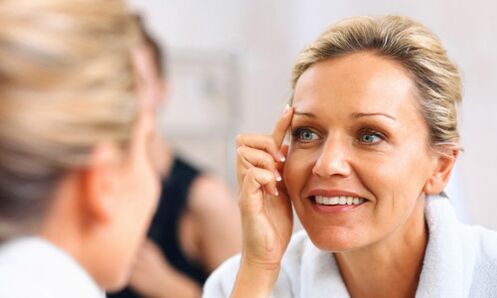
The first thing that comes to mind when it comes to face lifting is plastic surgery. However, not everyone is willing and able to expose themselves to radical influences. A compromise option in this case is a number of minimally and non-invasive rejuvenation techniques.
Non-surgical facelift- this is a whole layer of various procedures that can improve the condition of the skin, get rid of sagging tissues and make the oval clearer without surgical intervention and the associated difficulties.
The main advantages of such techniques compared to surgery are relatively low cost, low trauma and fewer contraindications. At the same time, with their help, it is not always possible to achieve as impressive a result as after surgery, and it does not last as long, usually up to 2-3 years, which partly offsets the cost benefit.
Basic methods of non-surgical lifting
All non-surgical face lifting procedures can be divided into several large groups:
- Injectable- subcutaneous administration of drugs that improve skin tone and general rejuvenation. This includes, in particular, mesotherapy, contouring and certain types of plasma lifting
- Hardware- performed on equipment that uses various energies (laser, radio wave, microcurrent, etc. ) to affect the skin.
- Lifting with threads- insertion of special biocompatible fibers under the skin, with the help of which the tissues are moved to a new position. The majority of thread lifts are a surgical technique, but their invasiveness and the number of contraindications are significantly lower than in the case of other anti-aging facial surgeries.
- Deep peeling, during which the upper layers of the dermis are removed. It stimulates skin renewal and thus provides a lifting effect
- Manual exercises- various massage techniques aimed at improving the tone of the facial muscles and activating the metabolism.
Injection lifting and facial rejuvenation
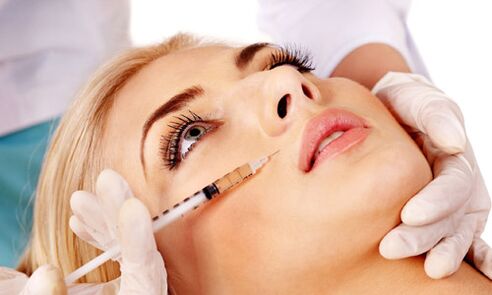
One of the safest and most common methods of this group ismesolifting– a version of mesotherapy using a complex of specially selected, active moisturizing and strengthening substances, which activates the cell renewal process, fills them with moisture and enhances local blood circulation. The standard course consists of 3-5 procedures, the duration of the result is 6-18 months. After mesolifting, the aging and sagging skin is noticeably smoothed, it looks fresh and young, deep static wrinkles are reduced and small wrinkles disappear, the skin is renewed at the cellular level, its color is evened out, turgor and elasticity are improved.
PlasmoliftingobsessionPRP therapyinjection of the patient's own blood (or, rather, specially pretreated plasma). The course consists of 4-5 sessions, the result lasts about 1 year. Plasmolifting acts locally, at the cellular level of the skin, starts the synthesis of collagen fibers, and has a rejuvenating effect on the whole body - it stimulates the immune system, starts the regeneration and cell renewal processes. In addition, the plasma, like a biological glue, attaches the facial skin to the underlying structures, eliminating age-related tissue ptosis. After completing the treatment, the skin becomes smoother, more elastic, toned, fine wrinkles disappear, and deep wrinkles are reduced.
If meso- and plasmolifting has a complex effect on the entire face, it tightens and rejuvenates it, thencontouring with fillersAndbotulinum therapyspecifically designed to treat specific age-related problems.
- The purpose of filler injections is to fill deep wrinkles, replace the volume of missing tissues, and correct the shape of the face. Today, beauticians have a wide range of products at their disposal, primarily high-density hyaluronic acid-based products that are used to correct certain age-related facial defects.
- Botulinum therapy uses drugs based on botulinum toxin type A, which block the nerve endings at the injection site and prevent facial muscles from contracting. As a result, the skin is smoothed and deep wrinkles are reduced or completely disappear.
The effect of contouring and botulinum therapy lasts approximately 8-12 months, depending on the activity of metabolic processes and other individual characteristics of the body.
Hardware hardening methods
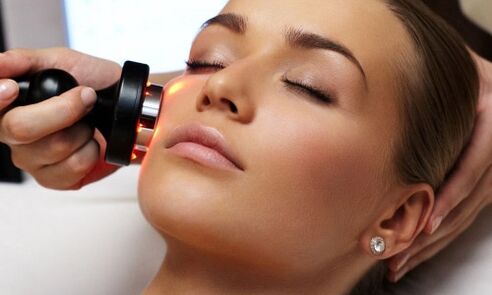
How most methods workhardware liftthe same - the subcutaneous tissue is heated by a targeted effect, which stimulates the compaction of existing collagen fibers and the production of new collagen and elastin. As a result, wrinkles are smoothed out, pores are narrowed, the skin becomes tighter and more elastic. The main difference between these procedures is the type of energy used (laser, radio waves, etc. ). Otherwise, they are very similar: they are carried out in courses of 3-5 sessions, and the duration of the result is about 2 years. Today, the most popular methods are:
- Laser thermolifting– they use laser energy;
- ELOS lifter– it is based on the effect of two types of energy – laser and light – at the same time;
- Radio frequency (RF) lift- low power and high frequency radio waves are used.
Another option -microcurrent therapy, – works a little differently. In such cases, the skin cells are stimulated by microcurrents and specially developed biological preparations containing strong antioxidants, which activate the natural mechanisms of skin regeneration.
The usual course of such non-surgical lifting consists of 4-5 procedures, which are performed once a week. The main advantages of this method include the minimal number of contraindications and the complete harmlessness of the body. Microcurrents activate metabolism, normalize the chemical composition of cells, and increase the elasticity of tissues - therefore, they are often used as a restorative procedure after surgical interventions.
Lifting with threads
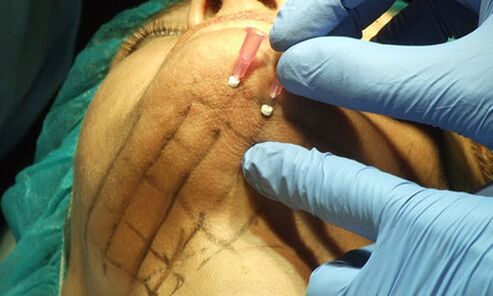
It is a minimally invasive technique in which thin fibers are inserted under the skin. They are then pulled up, moving behind them to fix the soft tissues in the desired position. The procedure is quick and safe, but still quite serious, so it should not be performed by a beautician who works with the "outer part" of the face, but by a plastic surgeon who knows its internal structure well. Depending on the patient's general indications and personal preferences, the following may be used:
- Non-absorbable fibersmade of biocompatible materials such as polypropylene.
- Mesofibers- they are somewhat less effective, but they are made of lactic acid, which does not remain under the skin, but is completely absorbed after a few months. In addition to actual tightening, they have a beneficial effect on the general condition and health of the skin (similar to mesotherapy, hence the prefix "meso" in the name)
The result obtained lasts 2-3 years on average, after which you can install additional threads or choose another technique (threads that have already been installed do not interfere with cosmetic procedures or surgical lifting). Some of the non-absorbable fibers can be "stretched" in the future, but there is no consensus among experts regarding the expediency of such manipulation.
Deep peeling
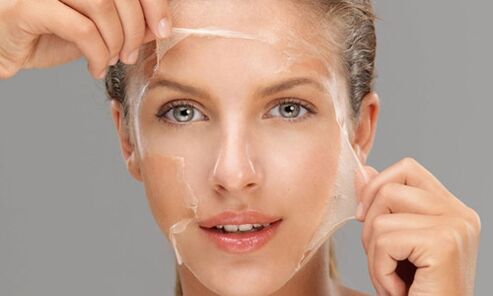
These are rather traumatic and painful, but at the same time very effective procedures, with the help of which you can enhance the regeneration processes of the skin, improve its color, smoothness and elasticity, as well as many external defects (hyperkeratosis, hyperpigmentation, etc. ).
- Underdeep chemical peelAcid preparations based on phenol are applied to the face, which destroy the upper layers of the skin up to the middle of the reticular layer of the dermis. The procedure is performed only in clinical conditions, under general anesthesia - as a full-fledged operation.
- Deep laser surface treatmentit combines two processes: the application of thermal microtraumas to the skin, which trigger internal repair mechanisms in it, and the vaporization (evaporation) of old cells. Modern fractional ablative lasers perform both operations simultaneously, which allows you to achieve a more pronounced lifting effect in fewer sessions than with previous generation lasers.
The recovery period after deep peeling is quite long (rehabilitation takes up to 2 weeks). The effect lasts about 1 year. If we compare the two procedures, laser surface treatment has one important advantage - the ability to adjust the strength and depth of the stroke "on the fly". This makes it possible to choose the optimal parameters in all areas, even in very sensitive areas (eyelids, lips, neck), which is impossible with chemical peels. In addition, the cooling system makes it less painful, allowing the use of local anesthesia.
Massage as a non-surgical facelift method
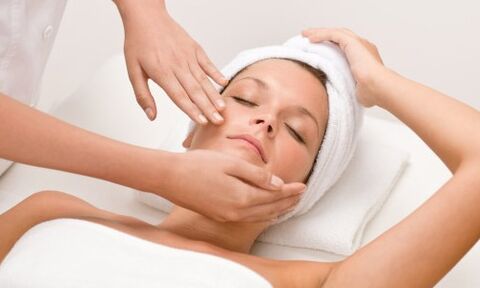
A certain lifting effect can also be achieved with the help of manual manipulation, although there are very different opinions among specialists regarding the severity and duration of this. The most popular procedure from this group issculpting facial massage(plasticizing massage, facial massage according to Joelle Siocco and other patented techniques).
The principle of its operation is based on deep training of facial and non-facial muscles, with the simultaneous activation of lymphatic drainage. The masseuse "sculpts" the contours of the face and corrects problem areas. As a result, the oval becomes clearer, the manifestations of age-related changes are reduced, muscle tension is relieved, and the color of the skin improves.
The standard course consists of 10-12 sessions, which are performed every 2-3 days. Additional maintenance procedures are required 2-3 times a month, which is a relative disadvantage of this non-surgical lifting method. The obvious advantages of sculpture massage are painlessness, complete safety, no rehabilitation period, risk of complications, and skin irritation. Its obvious disadvantage is that the results are significantly less pronounced compared to the other procedures described above.
How to choose the best non-surgical facelift technique?
In order to smooth out and possibly completely eliminate the signs of aging, the causes of their appearance must be determined. This unique diagnosis is one of the main tasks of the beautician or plastic surgeon. He should be entrusted with the selection of a specific rejuvenation method or a combination of them. In the case of the face, the question is usually:How "deeply" are age-related changes localized?
- If they primarily affect the skin - e. g. We are talking about small wrinkles, changes in topography, reduced turgor - we prefer methods that affect the dermal layer (restoration, compression, strengthening of the elastin-collagen framework, polishing of existing defects). Peeling, thermolifting, plasma therapy and mesolifting are used for this purpose.
- For problems related to the subcutaneous structures of the face (deep wrinkles, marked nasolacrimal furrows, jowls, bags under the eyes, loss of oval facial clarity, double chin), choose methods that affect the muscular framework and the subcutaneous skin. These include thread lifting, botulinum therapy, contouring, microcurrent and sculpture massage.
- In many cases, the changes affect both the skin and the internal structures, and to achieve a marked effect, a thoughtful combination of several rejuvenating techniques is required.
Expert opinion
Journalists asked leading beauticians to comment on the effectiveness of using certain non-surgical facelift options, and they also turned to plastic surgeons for their professional opinion:
"The question is much simpler than it seems. In order not to make a mistake with the choice of technique, not to go to surgery earlier than necessary, and not to spend longer than expected in the offices of beauticians, you need to figure out only three things:
- Condition of soft tissues, degree of ptosis.If the age-related changes have not gone too far, then we can talk about non-surgical solutions. If we are talking about pronounced wrinkles and rather large excess skin, do not waste time and money on cosmetology, do not engage in self-deception. Excess skin does not disappear by itself, it can only be removed with a scalpel, and only a plastic surgeon can help here.
- Circle.Up to the age of 40 (most often) cosmetic procedures work quite well. After 40 years, their effect becomes less and less noticeable, and after 50, if you need a real effect and not just care, then you should seriously think about surgery.
- The patient's wishes.Only you decide who to turn to and what you need. Not all women want to look 10-20 years younger, for many it is important to look well-groomed and fresh for their age. This problem can be solved without surgery. Dull skin tone, sagging, fine wrinkles, age spots, etc. – beauticians cope well with all these problems. But if you're not happy with your sagging facial contours, drooping eyelids, jowls, bags under your eyes, double chin or neck folds, just see a surgeon.
If you need a very small lift, look for a vector lift with various threads or contouring surgery. By repeating these procedures 1-2 times a year, you can postpone the operation for several years. You yourself will understand if the effect you get no longer suits you, and it's time to think about more radical methods. "
"Of course, non-surgical methods do not replace plastic surgery, but they are good preventive measures and can delay a visit to the surgeon for a long time. From the age of 25, it is advisable for women to use a gentle lift (hardware cosmetology). Almost all of the methods listed in this article can help with certain subtle age-related changes. Our specialists use some of these procedures individually, but most often as part of a comprehensive program.
Thus, stagnation may occur after facelift surgery, which can be easily treated with the help of microcurrents. Contouring with fillers makes it possible to correct minor age-related changes, but in this case, plasma fillers (analogs of hyaluronic acid fillers, which are produced from the patient's own blood) are more effective.
Botulinum toxin A preparations naturally give good results and cannot be replaced by analogues. RF lifting has a good effect both in the prevention of aging and in maintenance therapy after plastic surgery. But in our clinic, we do not use phenolic peeling due to its traumatic nature.
A significant advantage of non-surgical lifting procedures is that they can be recommended to patients at a very young age, with subtle age-related changes. For example, a gentle alternative to blepharoplasty can be plasma, laser or RF lifting, as well as mesofibers - what exactly to choose depends on the "severity" of the skin, the depth of wrinkles, the patient's age and the presence of certain contraindications.
"I would like to note right away that, of course, none of the minimally invasive techniques can compete in effectiveness with surgical interventions. However, it often happens that the patient's state of health does not allow such a step to be taken, or the specific situation does not yet require surgical intervention. In these cases, minimally invasive cosmetics come to our aid.
Thread lifting, laser face lifting, and radio frequency lifting techniques can delay the need for surgery and serve as a kind of temporary substitute for surgical facelift techniques. We can get rid of wrinkles with botulinum therapy and fillers. Plasmolifting improves skin turgor and general condition. Exfoliation is also responsible for the turgor, color and quality of the skin. These procedures are effective in their area of effect, but they are not a direct alternative to plastic surgery.
The clinic performs almost all the procedures described in the article, however, each of them has indications and contraindications. First of all, I recommend plasma lifting before and after surgery to patients who come to us for full facial plastic surgery, which shortens the rehabilitation period. But it is not worth performing any hardware rejuvenation procedures before surgery. "
"Currently, there are many effective methods of non-surgical facial rejuvenation, but it is important to understand the difference between the skills of a plastic surgeon and a cosmetologist. The surgeon shapes the facial contour, the beautician improves the quality of the skin. Aging manifests itself in the sagging of the skin and muscles, a decrease in the tone of the skin, and a deterioration in its quality. In total, there are about 5 types of aging, depending on its manifestations, and a rejuvenation program is developed, including non-surgical techniques.
Today, I consider hardware procedures (laser fractional photothermolysis, laser thermolifting), RF lifting, as well as contour plastic surgery and thread lifting to be the most effective. But it should be honestly noted that in case of severe ptosis and a large amount of subcutaneous fat, all types of hardware lifting are ineffective, since they affect the deep layers of the skin without touching its surface. Also very popular and effective is the so-called 3D facial modeling, which uses a series of measures: contouring, thread lifting, botulinum therapy.
In general, we have a fairly large selection of minimally invasive facelift methods in our arsenal, but an integrated approach is always needed to achieve the best results. No single method, no matter how good, can solve all problems. "
























